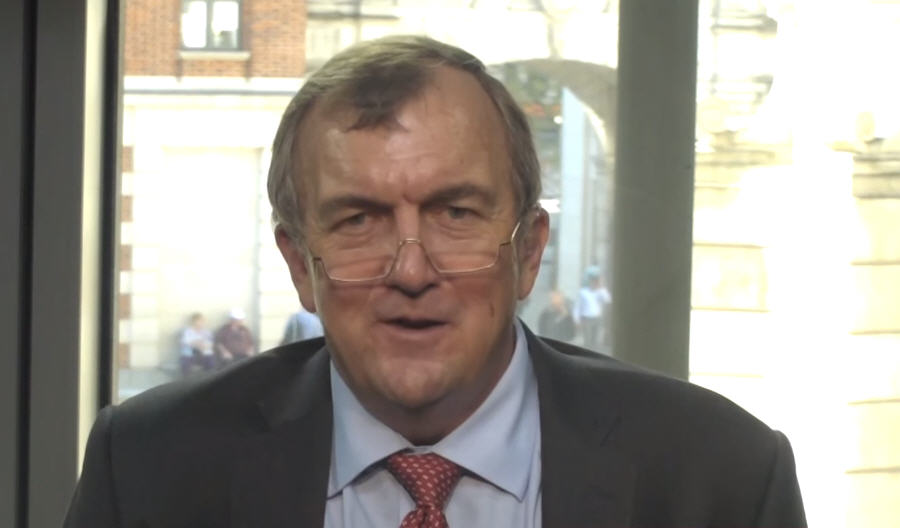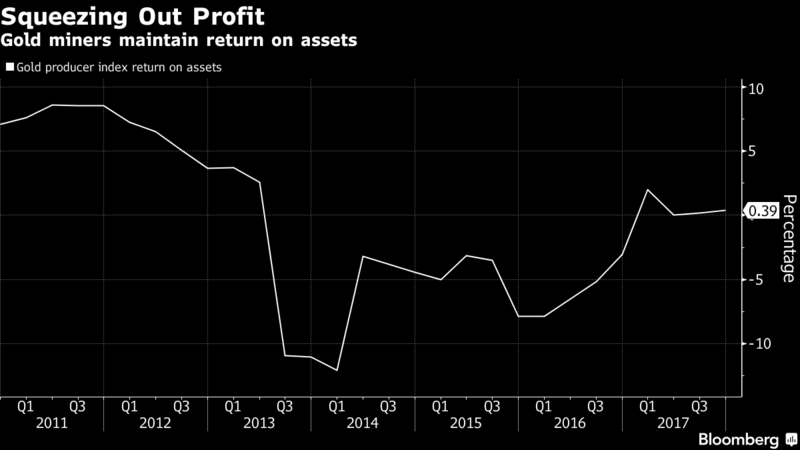
(Bloomberg) — A gold industry obsessed with containing costs and minimizing risks will find itself at the edge of a cliff by 2020 as supply tightens, according to one of the most profitable producers.
Despite prices recovering from 2015 lows, the industry has been slow to reinvest in exploration or sustaining capital, Randgold Resources Ltd. Chief Executive Officer Mark Bristow said. Half of the gold coming out of the ground isn’t profitable to mine based on the true extraction costs, he said.
“The one thing this industry does very well is mine gold at a loss,” Bristow told analysts at a breakfast meeting in Toronto on Friday.
The weakening outlook is being masked by a focus on all-in-sustaining costs rather than cash costs, he said. While companies can lower AISC and boost earnings by reducing spending to sustain operations or tightening exploration budgets, the tactic erodes asset quality in the long run, the CEO said.
Similarly, severe damage has been done by high-grading, which shortens the life of a mine by focusing on the best quality ore. Since 2007, grades have dropped from an average of 2.5 grams a ton to about 1 gram, Bristow said.
It’s not the first time Bristow has warned the industry is effectively producing at a loss. Two years ago, as prices hit a five-year low, he told analysts that half the metal coming out of the ground wasn’t profitable. That hasn’t changed despite a 20 percent-plus improvement in prices because it was accompanied by a drop in grades, he said in an interview following the analyst meeting.
In addition, large producers have re-focused on the developed world to minimize risks at the expense of asset quality, he said: “If you want to find elephants, go to elephant country.”

Meanwhile, Bristow blamed the widespread use of proxies by fund managers for the failure of executives and boards to be held accountable. He’s not the first to call for a reckoning within the industry. In September, billionaire John Paulson’s firm called for the creation of a coalition of gold investors to curb years of value destruction.
Paulson’s presentation cited $85 billion in lost value in the gold industry since 2010, but listed Randgold as offering the best shareholder total returns. The Jersey, Channel Islands-based company has the highest profit margin among large producers after Polyus PJSC, according to data compiled by Bloomberg.
But Bristow said Paulson’s Shareholder’s Gold Council isn’t the best way to clean up the industry.
“Management can’t be overly reckless with capital if it’s not allowed to be,” he said. “What’s missing there is a recognition that fund managers have been equally, or more reckless. I’m not sure that creating another club is the right approach.”
Large funds need to become much more active in working to appoint and remove board members rather than relying on proxy managers, Bristow said.
Meanwhile, “survival mergers” are needed because the industry has too many junior miners with single short-lived assets, he said.
The industry is headed for a dramatic supply shortage from 2020 if gold prices stay between $1,000 and $1,400 an ounce, he said.
Input costs probably will rise as “you’ve got a complete over-inflation of value in just about every asset class and industry in the world, with burgeoning central bank balance sheets.”
The result will be higher gold prices — but history has proven that’s not necessarily what’s best for the industry, he said.
“It would have just been very nice for the gold price to stay at $1,040 for another six months so it would clean the industry up,” Bristow said . “It just was too short-lived, that low gold price.”
Story by Danielle Bochove